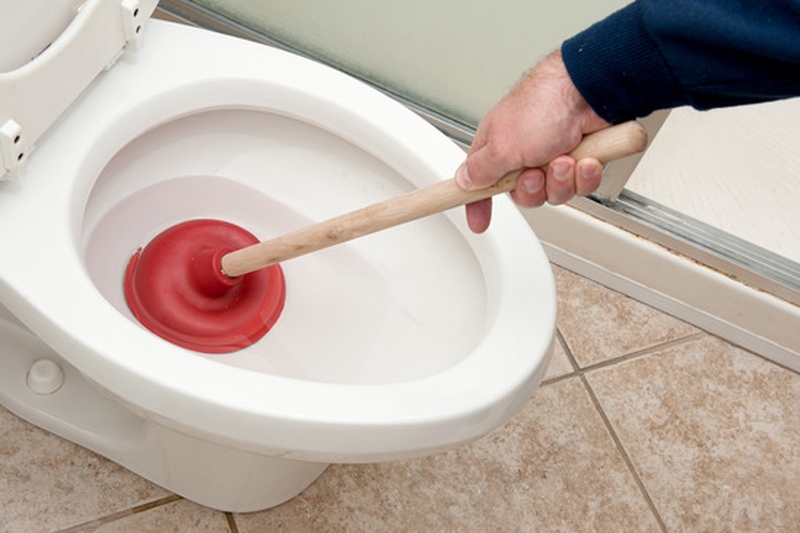Do you have a clogged toilet? That should not be a problem. With some good practice, even the most naive of all homeowners can get a clogged toilet running smoothly again in a matter of minutes, without covering the bathroom and making the situation more complicated. In this paper, we will let you know how to unclog a toilet and prevent a morning home disaster by clearing your clogged toilet fast.

How to Unclog a Toilet with a Plunger
Step 1: Make sure the toilet does not overflow
If after one flush, your toilet does not flush well, do not continue flushing. This will only cause more water to enter the toilet bowl. Instead, take the lid of your toilet off the tank and keep the toilet flapper closed. Closing the toilet flapper will prevent more water from getting into the bowl.
The flapper appears to resemble a drain stopper that is attached to a chain.
The water in the tank is not dirty water, so sticking your hand inside the tank to get the flapper closed may not be such a disgusting idea after all.
Step 2: Insert the plunger into the bowl
Ensure the hole is completely covered by the plunger. The plunger ought to be submerged in the water for it to be effective. Make sure you push and pull with water instead of with air. If necessary, add some water from the sink to the bowl.
Get the plunger plugged over the hole. Begin very slowly at first, since the initial plunge will force air into the bowl. Press down, then sharply pull up until the water starts draining. It will normally take between 15-20 times before your toilet gets unclogged. Exercise patience, so long as you know there is no hard object, you can get the job done with plunging alone. This might not yield immediate results but would mostly work after some repeated flushing, with every effort constituting of several dozens of plunging.
Step 3: Flush the toilet to check the drainage.
If the bowl eventually gets drained by the plunging, but there is still no free flow down the drain due to clogging, leave the plunger there in the bowl and get the bowl filled with water all over again. Fill it to the level where it stays after a normal flush, before plunging again. Difficult clogs might need you to repeat this severally.
How to Unclog a Toilet Without a Plunger
Step 1: Add shampoo and hot water
Get your soap/shampoo and squeeze a generous quantity into the bowl. Follow with one bucket of hot water from hot tap (not boiling water).
Make sure the toilet is full, but make sure it does not overflow.
Don't use boiling water because it is believed that boiling water can lead to the cracking of the toilet bowl.
After this, you can go and relax while the blockage gets dissolved.
Step 2: Return and see your handy work
Hopefully, the water level will lower after some minutes. (Hot water is quite helpful for breaking up the toilet paper faster and the soap oils the passage of solid particles).
If nothing happens, wait for about 10 minutes or more. You might need to use a new method if nothing happens. You can also bail out more water and add some more soap or water.
If the water level becomes lower than it earlier was, add some more soap and hot water (hot water must not be as hot as it was initially as there is less water to heat up this time in the toilet.
Again, you have to wait for the water to get drained (this should happen faster).
Repeat this process until the water can flow freely.
Step 3: Done
Yes, done.
Don't forget to let your party goers know the importance of treating your toilet with adequate respect and only deposit bodily excretions and very little amount of toilet paper in there.
- Avoid using chemicals. Don't be deceived into thinking that some powerful chemicals will help you get the messy work done. They do work sometimes, but they are quite slow. And when they fail to work, you will have a drain filled with corrosive water to deal with. Once you try some chemicals and they fail to work, run plenty of water and allow it to sit all through the night to drain via the block. Then, each time you plunge, wear rubber gloves and safety goggles to make sure the water does not enter your eyes or touch your bare skin.
- Make sure you keep the toilet cover down, most importantly when there are small kids in the house, this will ensure no hairbrushes or toys falls into the toilet.
- Avoid pouring any hardening compound down your toilet. This involves drywall joint compound, wax products and caulk.

View All Comments /Add Comment